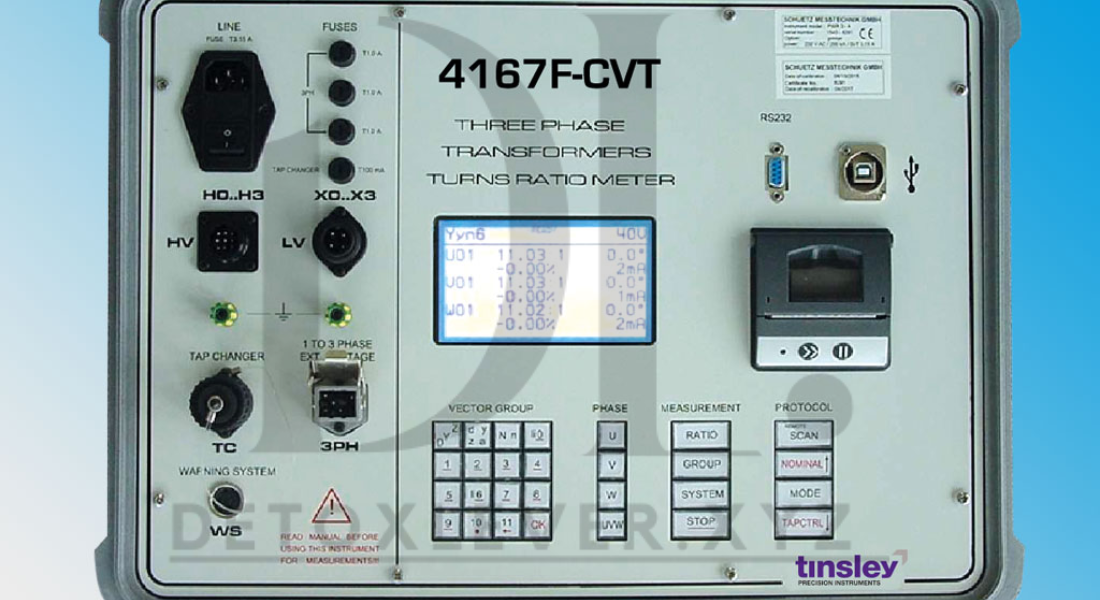
Transformers play a vital role in electrical distribution, ensuring the efficient transmission of power across long distances. Without these crucial devices, modern society would struggle to function efficiently, as transformers step up or step down voltage levels to suit different applications. However, to ensure transformers perform at their best and remain operational for an extended period, transformer testing equipment is indispensable. These tools help professionals assess the condition, performance, and safety of transformers, identifying issues before they escalate into costly and hazardous problems.
This article explores the importance of transformer testing equipment, the types of tests conducted, and the tools available for professionals to ensure that transformers continue to meet the demands of today’s power systems. By the end of this guide, you will understand why transformer testing is vital and how the right testing equipment contributes to the longevity and efficiency of these electrical components.
Understanding Transformer Testing Equipment
Transformer testing equipment refers to a range of specialized tools used to assess the performance, condition, and safety of transformers. These devices help electrical engineers and technicians detect faults, confirm operational efficiency, and ensure compliance with international safety standards. Testing transformers can reveal issues such as electrical insulation breakdown, poor connectivity, and winding faults, all of which can affect transformer performance.
The primary goal of using transformer testing equipment is to avoid failures that could lead to power outages, equipment damage, or unsafe situations that pose risks to human lives and equipment. Proper testing helps extend the lifespan of transformers by ensuring they operate within optimal conditions. Additionally, testing provides valuable insights into the overall health of a power system and identifies areas for improvement.
Key Types of Transformer Tests
Various tests are performed on transformers, each designed to evaluate specific characteristics. Transformer testing equipment varies depending on the type of test being conducted. Below are the key tests typically performed:
1. Insulation Resistance Test
The insulation resistance test is one of the most essential for transformers. It ensures the insulation is effective and capable of preventing current leakage. Poor insulation can lead to faults and failures, so detecting insulation issues early is crucial.
This test is conducted using a high-voltage DC power source to measure the resistance of the transformer’s insulation. It helps identify weaknesses in insulation that could lead to electrical breakdowns or short circuits, which could be catastrophic for both the transformer and the connected power system.
2. Winding Resistance Test
The winding resistance test evaluates the integrity and condition of the windings inside the transformer. By applying a small DC voltage, technicians can measure the resistance of the primary and secondary windings. If resistance values are inconsistent or higher than expected, they may indicate damage or degradation of the windings. Winding resistance tests also help identify issues like loose connections, which can affect the transformer’s overall efficiency.
3. Turns Ratio Test
The turns ratio test measures the ratio of the number of turns of wire in the primary winding to the number of turns in the secondary winding. This test verifies that the transformer is functioning as designed. If the turns ratio is incorrect, the transformer may not provide the expected voltage conversion, potentially leading to power quality issues or inefficiency.
4. Dielectric Test
This test determines the dielectric strength of the transformer oil and insulation materials. A dielectric test measures the transformer’s ability to withstand electrical stress without breaking down. This test is essential for ensuring that the transformer continues to operate safely under high-voltage conditions.
5. Power Factor Test
The power factor test measures the power factor of a transformer, a key indicator of how efficiently the transformer is operating. A low power factor suggests that the transformer is not effectively converting electrical energy, which can lead to energy losses. Conducting a power factor test allows technicians to assess whether the transformer is running efficiently or if there are underlying issues such as leakage currents or poor insulation.
6. Partial Discharge Test
Partial discharge tests detect small electrical discharges within the transformer’s insulation system. While these discharges are not immediately damaging, over time, they can lead to insulation breakdown. Detecting partial discharge early allows technicians to address potential problems before they escalate into more serious failures.
7. Frequency Response Analysis (FRA)
Frequency response analysis is an advanced diagnostic tool used to assess the mechanical and electrical condition of a transformer’s windings. This test helps detect problems such as winding movement, deformation, or misalignment, which can affect transformer performance. FRA tests use a range of frequencies to measure the impedance of the transformer and identify abnormal conditions.
Types of Transformer Testing Equipment
Several types of transformer testing equipment are available on the market, each designed for specific tests. Below are some of the most common tools used by electrical engineers and technicians for transformer testing:
1. Megohmmeter (Insulation Resistance Tester)
A megohmmeter is one of the most essential tools for insulation resistance testing. This device applies high-voltage DC to measure the resistance of the transformer’s insulation system. Megohmmeters can test high-voltage transformers and identify weak spots in insulation that may cause failures.
2. Winding Resistance Meter
A winding resistance meter measures the resistance of transformer windings during a winding resistance test. These devices accurately measure low resistance levels, allowing technicians to detect even minor issues with the windings, such as loose connections or corrosion.
3. Turns Ratio Meter
Turns ratio meters are designed for performing turns ratio tests. These meters measure the ratio of turns in the transformer’s primary and secondary windings, ensuring that the transformer is functioning correctly and efficiently. A high-quality turns ratio meter provides accurate and reliable results, preventing transformer malfunction.

4. Power Factor Test Set
A power factor test set is used to measure the power factor of a transformer. This equipment evaluates the efficiency of the transformer’s energy conversion and helps identify any issues that might lead to power losses. Power factor testing is vital for assessing the overall health of a transformer.
5. Partial Discharge Detector
Partial discharge detectors are specialized tools used to detect partial discharges within transformer insulation. These detectors identify early signs of insulation breakdown, which can help prevent catastrophic transformer failures. Advanced partial discharge detectors use ultrasonic or electrical sensors to detect these small discharges.
6. Dielectric Strength Tester
Dielectric strength testers measure the dielectric strength of transformer oil and other insulating materials. These testers apply high voltage to determine a material’s ability to withstand electrical stress. A dielectric strength test is essential for ensuring the safety and reliability of the transformer under high-voltage conditions.
7. Frequency Response Analyzer
Frequency response analyzers are advanced diagnostic tools used to assess the mechanical and electrical conditions of transformer windings. FRA devices measure the impedance at various frequencies, detecting issues such as displacement, deformation, or deterioration.
Importance of Regular Transformer Testing
Regular testing of transformers using high-quality testing equipment is essential for ensuring their efficiency and safety. Performing routine checks helps detect early signs of wear and tear, preventing expensive repairs and downtime. Additionally, regular testing ensures that transformers meet safety standards and continue to operate at peak performance, providing reliable power to industries and consumers.
In the event of transformer failure, the consequences can be severe. These failures often result in power outages, equipment damage, and costly repairs. Routine testing helps mitigate these risks by identifying faults before they lead to system-wide failures.
Conclusion
Transformer testing equipment plays an essential role in maintaining the reliability, safety, and efficiency of transformers in power systems. By conducting various tests using specialized tools, professionals can assess the condition of transformers and identify potential problems before they lead to expensive repairs or catastrophic failures. Whether performing insulation resistance tests, winding resistance tests, or partial discharge tests, the right transformer testing equipment ensures that transformers continue to operate safely and efficiently.
Investing in high-quality transformer testing equipment and performing regular tests helps utility providers and industries safeguard transformer performance, ensuring uninterrupted power distribution and reducing the likelihood of costly failures. Understanding the different types of testing equipment and tests performed is critical for maintaining reliable and efficient power systems, ultimately benefiting industries, businesses, and consumers alike.
Leave a Reply